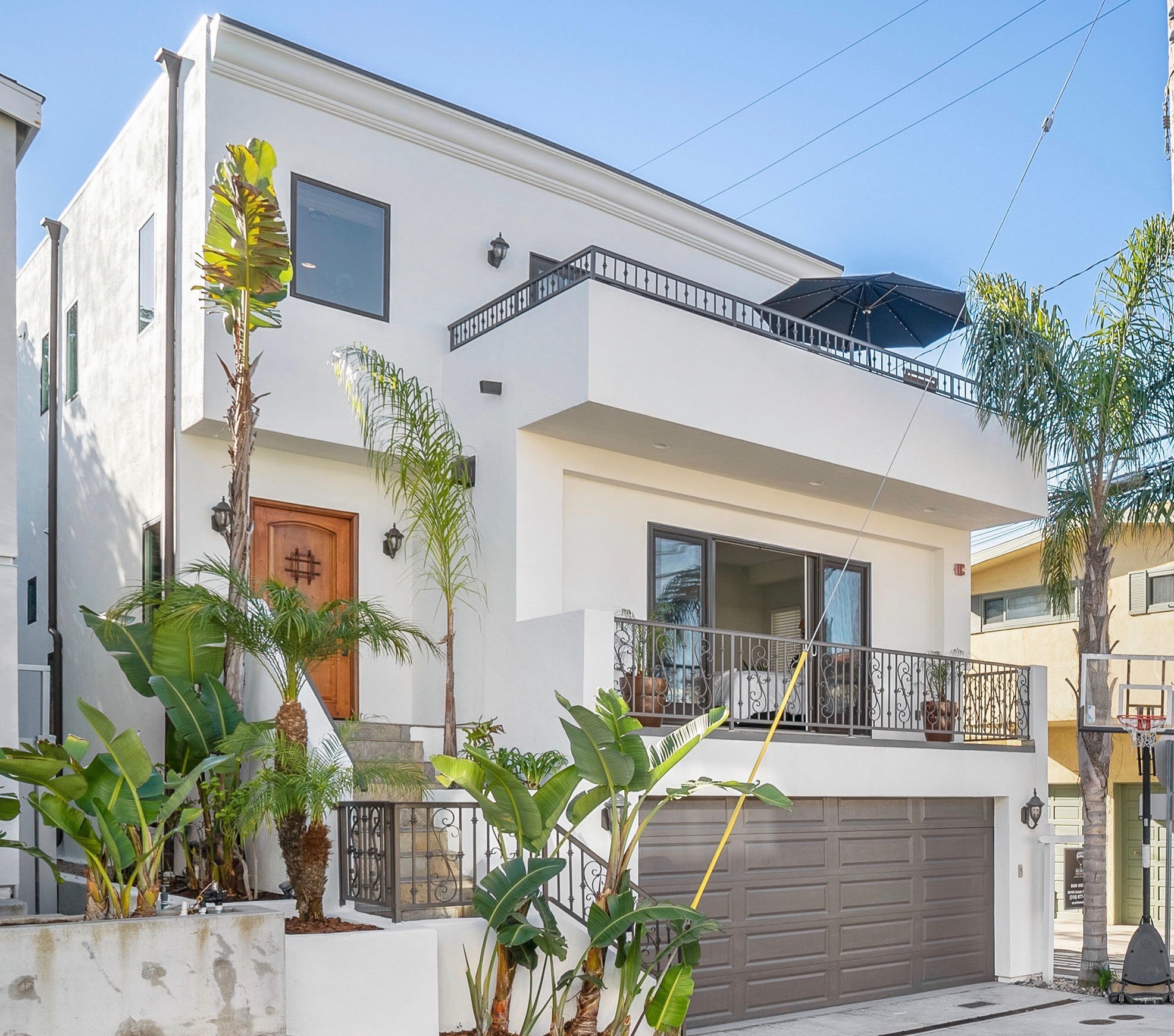It Has Been a Very Long Time Since I Have Penned a Real Estate Update
Bob Sievers 0 comments 11.04.2022
During my 30 year career on Wall St prior to my last 8 years in real estate, I was intensely focused on watching monetary policy by the federal reserve and other impactful economic forces such as government spending, social trends, etc...Coupled with my degree in finance at USC wayyy back in 1980-84, I believe this can be value-added to my clients and friends. So if you are interested in a different perspective, please read on...It is lengthy but I hope worth the read...
Other than the very short-lived coronavirus dip in home and rental prices (roughly 10% March 2020-June 2020), the market has been booming since 2011. Once the federal reserve made perhaps the biggest policy mistake in its history in the summer of 2020, prices have exploded near parabolically as anyone has clearly noticed. Let me quickly break down the gains and their source as well as some other salient points regarding inflation, fed policy and market outlook.
- In 2020 the Federal Reserve Bank or the "fed" increased the supply of money by 25%. This means that PRICES of most everything would increase by 25%. This does not mean the VALUE (what a dollar can buy) increased by 25%. As a matter of simplicity, the VALUE of any asset that is 25% higher priced in dollars that are worth 25% less is unchanged. Despite good intentions (maybe), this has increased the wealth gap by holding up real values for asset owners and crushing those with savings or those who live paycheck to paycheck. So when they tell the masses they are helping them by sending checks in the mail, one should be skeptical since the people sending the checks just so happen to be the people with assets.
- Since the 10% blink of an eye dip in 2020, prices have increased by more than the 25% debasement of the currency. As a matter of fact, most homes in our area are up at least 35-40% from that low point and the frenzy continues with multiple offers on virtually anything that is priced to the most recent comps. The market is clearly in a hyper bull stage.
- Inventory is at an all-time low due to both a lack of building during covid, the cost of building during the fed-induced inflation and even more importantly the explosion in government spending on "covid relief", and a ton of pork to go along with it. This is like dropping gasoline from helicopters on a brush fire of inflationary forces. The supply chain has artificially boosted most goods far beyond the numbers above, however that is likely to work itself out over a year or so, which is why the fed felt the inflation was "transitory". They were wrong and anyone with a brain knew it. The supply chain part was likely transitory but there is no reeling in the spending which put too much stimulus into the economy thus causing 70s style inflation. However, the fed has embarked on draining some liquidity out of the market for the first time in 15 years. More on that below.
- On the subject of housing inventory, it is so low, one cannot but conclude prices will continue to climb in the SHORT TERM. There are 35 homes for sale in ALL of Manhattan Beach. 3 in the tree section! By contrast, even in the past strong years, inventory was 4x+ that. 2009 it was 8x+. Other forces causing this besides a lack of building, pent-up savings, have been ultra-low rates, free money, the "work from home" phenomena as well as FOMO (fear of missing out) as cash holders rush to guard their savings from inflation.
- Most everyone knows the fed is now embarking on aggressively raising interest rates to try to cool inflation. What many do not fully understand is quantitative tightening. Let me explain. Since the financial crisis, the federal reserve bank has been buying mortgage bonds, municipal and even junk bonds and other interest rate instruments. This is another way to lower interest rates buy propping up the bond market (which trades inversely to rates). These are longer-term rates, to which mortgage rates are tied. When you hear about the fed lowering or raising rates, this is the OVERNIGHT rate which does not directly affect long-term rates, though has some influence. They have bought 11 trillion in these bonds since 2009. Who do they buy them from? The federal government, which is how the government finances their drunken spending. Other buyers of the government debt are foreign governments (China noteworthy), institutions and the public. However, other sovereign nations have begun reducing (selling) their US debt holdings. As the 10 Year bond, a great barometer of mortgage rates hit a low of .38%, the main buyer was the federal reserve bank (they print money to buy them). This is how rates were pushed artificially low by the fed. The fed was the biggest buyer of the government debt...until now.
- The fed suspended buying more bonds from the government and has announced that in May they will begin to SELL them. About a trillion per year. While at the same time raising short-term rates. They are soooo far behind the curve they will need to clobber the bond market to get rates to a level to cool off inflation. This is no easy task. Smart people know this. This is why I am personally short bonds and many hedge funds are building similar positions. Alongside this, sovereign governments are selling bonds. Worst yet, the federal government must sell bonds monthly to finance spending, but they can low longer sell them to the federal reserve bank. They are actually BOTH sellers. As bonds go down, long-term rates go up. The 10 year now stands at 2.75% and 30-year mortgages have topped 5%. These are still somewhat low in longer historical terms but have plenty of room to move higher. It is my personal opinion that the unwinding of the fed's bond purchases will have a much more dramatic effect on rates than their planned increases of shorter-term rates (fed funds, discount rate). Worse still, as rates rise, the federal debt which is near 30 trillion becomes more expensive to finance and a MUCH larger part of our federal spending goes just to service the debt at higher and higher rates. Not pretty.
- For a lot of people this is probably pretty technical but I can't tell the story without the details. The real estate market presently tells 2 tales. Low inventory points to higher prices, RAPIDLY rising rates and an almost certain recession as a result, is normally a huge drag on prices and rents. One data point that stopped me from my recent rental property search is the cap rate on rental property. This is simply what a property yields after expenses assuming no debt. The beach area is presently averaging 1.7% which is an ALL TIME LOW. In a sane environment, cap rates should be a percent or two ABOVE the risk-free rate (government bonds) which is presently 2.7% and RISING. So with zero risk, I can make 2.7% or I can buy a rental property and make 1.7%. Why would anyone do that???? Of course, because they expect the property to APPRECIATE.
- Appreciate they will until inventory returns to normal or demand falls off a cliff due to high rates. So far, neither has happened. But do not forget, the fed has not even begun to sell their bonds. I am not and have never been a doom and gloom person. The result of all this could be a soft landing, but likely not. The fed has been backing themselves into a corner since 2008 and the only thing that has saved them has been low inflation. So it appears to be hangover time after the biggest easy money party in the nation's history.
I have been perplexed lately as I have cash to put to work that inflation is eating away not so slowly anymore. Low inventory continues to be the one thing keeping the train moving at full speed. I abandoned my rental property search when I asked myself a very simple question. When the inventory was at its highest level in my lifetime (2009), was that a good time or a bad time to purchase property? The answer is obvious. So conversely with inventory at an all-time low, is it better to be a seller or a buyer? Of course, I am not running out and selling my home. Coastal real estate has always been the most resilient in any market. However, when it comes to investment property, I continue to hold what I own (not much) since the property tax basis is lower and the rents have risen. But when it comes to a NEW investment in rental property, the 1.7% cap rate, the panic buying, and most importantly the looming bond sales flash some pretty strong warning signals. My personal take is that we rise into the summer, then begin to level off and that 2023 may be tough sledding for some time. However, every downturn creates OPPORTUNITY and I look forward to taking advantage should that come to pass.
This is my opinion, and should not be interpreted as investment advice. I welcome points of view contrary to my own as my view is dynamic and adaptive. I hope this blog finds you well.





